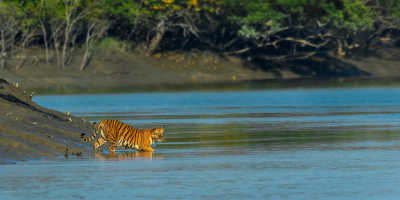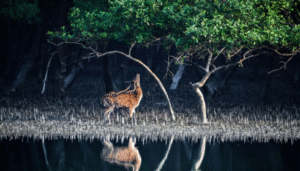
Sundarban tour
If you’re looking to escape the chaos of city life and immerse yourself in nature, a Sundarban tour is the perfect getaway. Nestled in the southern part of West Bengal, India, the Sundarbans is the world’s largest mangrove forest and a UNESCO World Heritage Site. This mysterious land of rivers, creeks, and dense forest is home to the famous Royal Bengal Tiger and a host of unique wildlife and flora. Whether you are a nature lover, adventure enthusiast, or wildlife photographer, the Sundarbans has something special to offer.
The Beauty of the Sundarbans
The Sundarbans span approximately 10,000 square kilometers, with about 60% in Bangladesh and the rest in India. This deltaic region is formed by the confluence of the Ganges, Brahmaputra, and Meghna rivers, making it one of the richest biodiversity hotspots in the world. The interconnecting network of tidal waterways, mudflats, and small islands makes boat travel the most popular way to explore this enchanting region.
The name “Sundarban” comes from the Sundari trees that dominate the mangrove forests. These salt-tolerant trees not only add to the beauty of the landscape but also play a crucial role in protecting the coast from erosion and storms.
Wildlife Encounters
A Sundarban tour is incomplete without a glimpse of its incredible wildlife. The Royal Bengal Tiger, known for its swimming ability, is the main attraction here. Though elusive, spotting one in its natural habitat is a thrilling experience.
Apart from the tiger, the Sundarbans is home to saltwater crocodiles, spotted deer, wild boars, water monitor lizards, and several species of snakes. Bird watchers will be delighted with the variety of avian life, including kingfishers, eagles, herons, and the rare masked finfoot.
One of the highlights of a trip is witnessing the unique biodiversity that thrives in this intertidal zone. The combination of saline and freshwater creates a perfect ecosystem for a wide range of species.
Best Time to Visit
The ideal time to plan a Sundarban tour is between November and March. During these months, the weather remains pleasant, and chances of wildlife sightings are higher. Monsoon is not advisable due to heavy rainfall and possible floods, which can disrupt travel plans.
How to Reach the Sundarbans
The easiest way to reach the Sundarbans is from Kolkata, which is about 100 kilometers away. From Kolkata, one can travel by road to Godkhali, the gateway to the Sundarbans. From there, boats take tourists deep into the forest. Tour packages are available ranging from one-day trips to three-night adventures, each offering a unique glimpse of the region.
Local Culture and Cuisine
Beyond nature, a Sundarban tour also offers insights into the local culture and traditions. The local communities are primarily engaged in fishing, honey collection, and agriculture. You may get a chance to watch local folk dances like Bonbibi Pala, which narrates tales of the forest goddess Bonbibi and her protection over the villagers.
Savoring local Bengali cuisine is another highlight. Fresh fish, crabs, prawns, and vegetables cooked in traditional spices provide a delicious experience for food lovers.
Responsible Tourism
As a fragile ecosystem, the Sundarbans requires visitors to be conscious of their environmental impact. Always opt for eco-friendly tour operators, avoid littering, and respect wildlife and local customs. Sustainable tourism ensures that this natural treasure continues to thrive for future generations.
Conclusion
A Sundarban tour is not just a vacation; it’s a journey into the heart of nature, filled with discovery and awe. From the majestic Royal Bengal Tiger to the soothing boat rides across the mangrove waterways, every moment spent in the Sundarbans is unforgettable. So, pack your bags and set out on an adventure that will leave you with stories to tell and memories to cherish.


